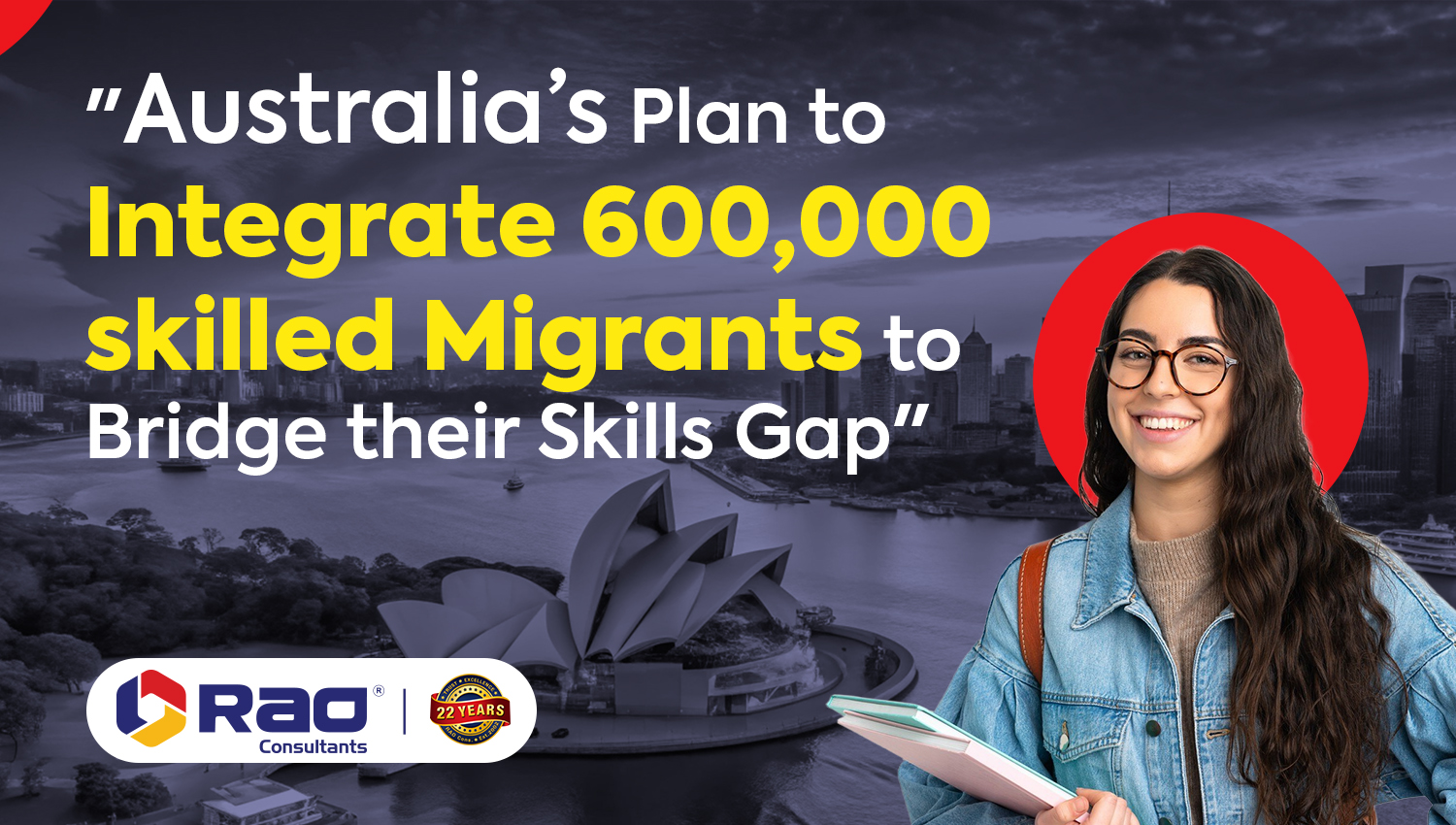News


Rao Consultants
February 17, 2025
Australia’s Plan to Integrate 600,000 Skilled Migrants to Bridge Their Skills Gap
![]()
Australia is experiencing a serious labor crisis, with over 600,000 skilled migrants unable to work in their educated professions due to the cumbersome and costly procedure of recognizing international degrees. In this issues Australia has some significant manpower shortage in many industries, including Civil, Healthcare, and Engineering. To Resolve this issue, there are many Entrepreneur and Government Agencies are trying to resolve it very significantly and they may generate economy benefits.
A report from Deloitte highlights that nearly 45% of permanent migrants in Australia are working below their skill level. This includes:
- Over 201,000 professionals trained in management and commerce
- More than 80,000 engineers
- Nearly 50,000 healthcare professionals
The main barrier keeping these highly qualified migrants from pursuing careers in their fields of expertise is the expensive and drawn-out procedure of getting their credentials accepted. This problem will keep making the nation’s labor shortage worse, if change is not updated.
How will Australia tackle this Labour Shortage?
To tackle this issue, the Abilities alliance of Enact Australia has proposed making a public association to oversee the acknowledgment of unfamiliar degrees. Furthermore, the collusion recommends laying out specific data communities in regions with enormous settler populaces and offering candidates monetary help to assist them through the application with handling. Gauges recommend that incorporating these actions might help the Australian economy by an additional billion yearly. Solid help for these progressions is likewise shown by a new popular assessment study, which discovered that 61% of Australians support facilitating the cycle for perceiving degrees procured abroad.
By presenting revisions focused on at eliminating delays for clinical experts, the Australian government has ventured out toward change. The assessment and enlistment system for ensured attendants from six countries, including the US and the UK, will be sped up starting in Spring. It is sure that this activity will diminish holding up periods by however much a year, work on the quicker section of qualified experts into the business. To beat accreditation obstacles in other pivotal regions, be that as it may, greater underlying changes are as yet required.
Labour Shortage for Australian Construction Industries
One of the industry’s most severely impacted by the skilled worker shortage is construction. According to Master Builders Australia, in order to fulfil industry expectations, an additional 130,000 workers would be required this year alone. The group cautions that the nation will find it difficult to reach the National Housing Accord’s goal of constructing 1.2 million new dwellings by 2029 unless there is a notable rise in skilled migration. To recruit additional workers, industry leaders have urged for reforms to skilled migration rules, such as lowering sponsorship fees, streamlining visa procedures, and relaxing English language requirements for non-licensed trades.
With lodging deficiencies strengthening, land area authorities battle that expanded migration is basic to finishing new tasks on time. They have additionally requested that the public authority change charge strategy, especially in regions like Victoria and New South Grains, where current assessment designs might beat unfamiliar interest in new pursuits down.
Regional Visa Initiatives
In an effort to draw in qualified workers to regional areas, the Victorian government plans to implement fast-tracked visas for overseas student graduates who want to live and work outside of big cities. At least 25% of the state’s Skilled Work Regional Visa allotment will be earmarked for graduates of Victorian institutions. The project aims to address significant workforce shortages in areas like sophisticated manufacturing, social services, hospitality, and tourism.
Specialists are under expanding strain to institute critical changes as labour supply deficiencies keep on influencing various organizations. To support the economy and fulfil work needs, it very well might be fundamental to expand gifted movement ways and all the more successfully perceive unfamiliar degrees. Broader policy adjustments will be required to guarantee that skilled migrants may fully contribute to Australia’s workforce in the years to come, even if initiatives have been done to speed up the process for some healthcare workers.
You May Also Like

Canada’s Proposed Citizenship Bill: A Landmark Opportunity for the Global Indian Diaspora
Canada is once again reaffirming its image as one of the world’s most inclusive and forward-thinking nations with a historic new bill—Bill C-3, introduced on June 5, 2025—that seeks to restore and expand citizenship rights, especially for those known as the “Lost Canadians.” This reform, if passed, is expected to have a far-reaching impact, particularly […]
Read More
Lena Metlege Diab Becomes Canada’s New Immigration Minister
![]()
Lena Metlege Diab has been appointed as Canada’s new Minister of Immigration, Refugees and Citizenship. The announcement was made on May 13, 2025, as part of a cabinet change by Prime Minister Mark Carney. Diab takes over from Rachel Bendayan, who briefly held the role after Marc Miller. This new position puts Diab in charge […]
Read More
Anita Anand Becomes Canada’s First Hindu Woman Foreign Minister: A Big Step for India-Canada Relations
![]()
Anita Anand has made history by becoming Canada’s new Minister of Foreign Affairs. She is the first Hindu woman to take this important role, showing how Canada is becoming more diverse and inclusive. Her appointment could also help improve the relationship between India and Canada. Her Journey in Politics Before entering politics, Anita Anand was […]
Read More